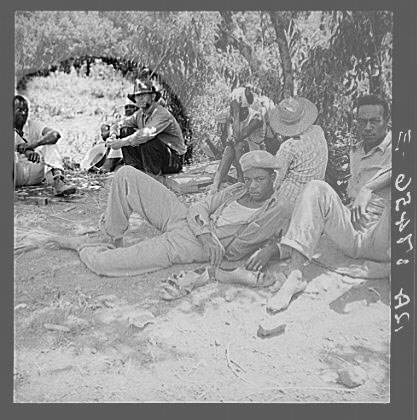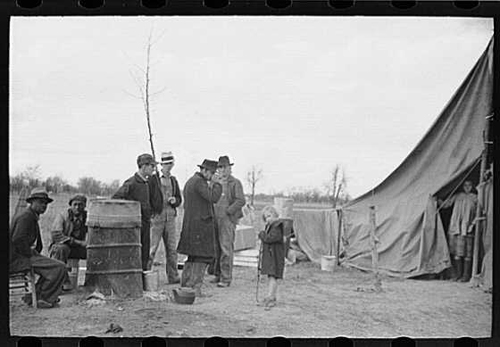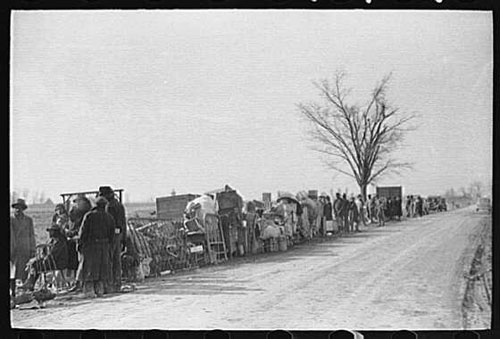| home | pg. 1 | pg. 2 | pg. 3 | pg. 4 | pg. 5 | pg. 6 | pg. 7 | pg. 8 | pg. 9 | pg. 10 | pg. 11 | pg. 12 | pg. 13 | pg. 14 | pg. 15 | pg. 16 | pg. 17 | notes | Transylvania detail 1 | Transylvania detail 2 | Wolcott detail | Bibliography | D. Gorton Homepage | Jane Adams Homepage
|
|
Reading the Photographic Record
by
Jane Adams
D. Gorton
|
The great irony of these New Deal programs is that people, who in their desperate poverty were integrated, were in their opportunity segregated. Race was trumped almost completely by class in the discourses animating the New Deal. Southern blacks, legally disfranchised by the early twentieth century, had no purchase on national power. |
 |
|
Despite their overwhelming numbers in the Delta, almost the only power they had was individual and local. They could, occasionally, as John H. Scott did in Transylvania, and as the evicted sharecroppers did in the Missouri Bootheel in 1939, capture the attention of influential national organizations and media. The FSA photographers did not resolve the tension that existed between the reality of white supremacy and racial segregation on the one hand, and the reality of black majorities on the other. Occasionally they were visibly partisan, as with Arthur Rothstein’s documentation of the evicted sharecroppers in Southeast Missouri. |
 Evicted sharecroppers along Highway 60, New Madrid County, Missouri. Arthur Rothstein, January 1939. LC-USF33- 002947-M4 Evicted sharecroppers along Highway 60, New Madrid County, Missouri. Arthur Rothstein, January 1939. LC-USF33- 002947-M4 |
|
|
 Evicted sharecroppers along Highway 60, New MAdridCounty, Missouri. Arthur Rothstein, January 1939. LC-USF33- 002927-M1 |
| home | pg. 1 | pg. 2 | pg. 3 | pg. 4 | pg. 5 | pg. 6 | pg. 7 | pg. 8 | pg. 9 | pg. 10 | pg. 11 | pg. 12 | pg. 13 | pg. 14 | pg. 15 | pg. 16 | pg. 17 | notes | Bibliography | Transylvania detail 1 | Transylvania detail 2 | Wolcott detail |
|
|